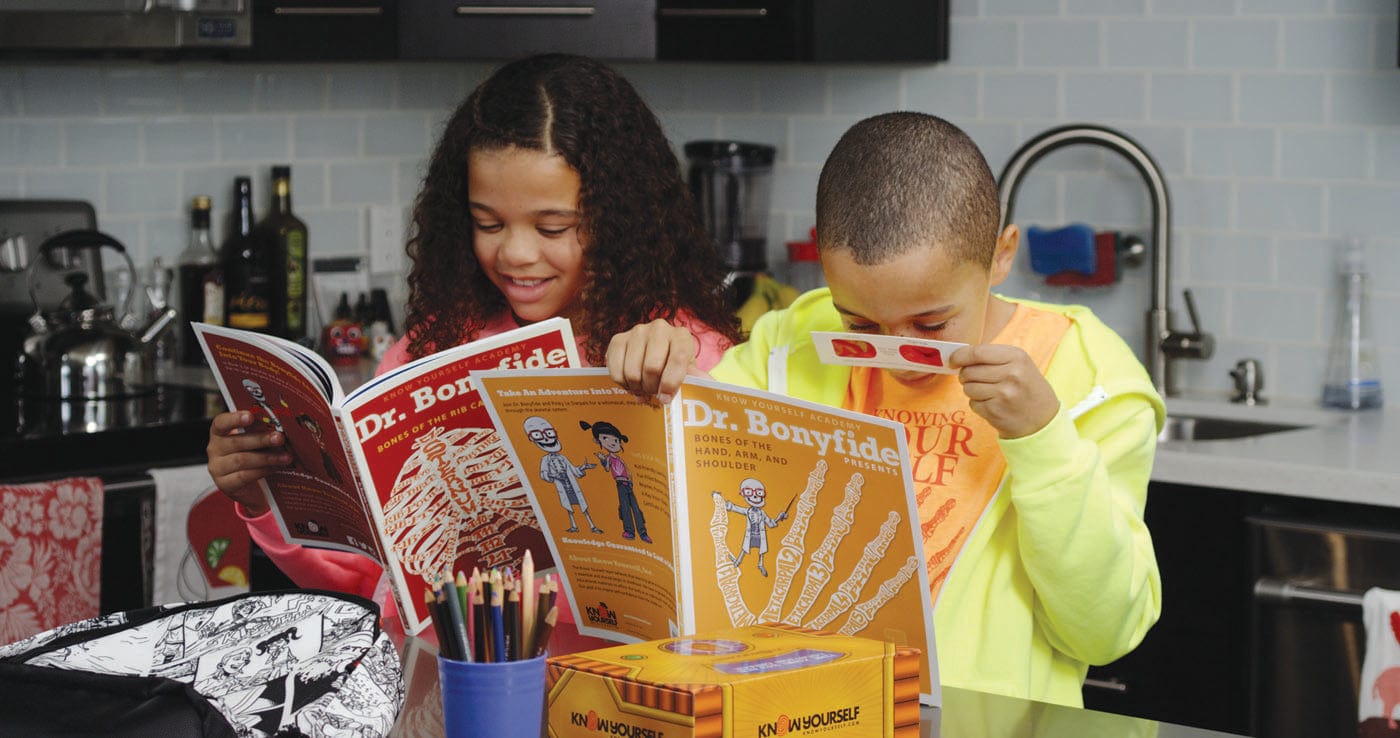
Our Healing Bones
Bones are made to be somewhat flexible, but also strong enough to take big hits. However, if we do break a bone, our bones are amazing in their ability to heal from a fracture or crack. Sometimes, people will get small cracks in their bones without even realizing it. When someone breaks or fractures a bone, however, it is much more noticeable. A broken bone will hurt a lot, might be hard to move, and will often bruise and swell. When this happens, a doctor will take X-rays, make sure the bones are in place, and place a cast or splint to stabilize the area and aid the healing process.
There are four parts to the bone repair process:
Step 1: Hematoma Formation
Immediately after a bone breaks, your body responds to the injury by sending blood to the area. This blood then clots, turning from liquid to a gel-like substance, around the bone fracture. That forms a hematoma (similar to a bruise) which fills the gap caused by the break.
At the same time, your immune system reacts by sending an inflammatory response - the injured area becomes red, swollen and painful. This tells your body to stop using that part, so that it can heal.
Step 2: Callus Formation
Around a week after the break, your body starts to form a soft callus to fill the space between the broken parts of the bone. Formed mostly ofcollagen, it helps to hold the bone together and prepare the space, but it’s not sturdy enough for use. The soft callus formation normally peaks after about 8 days.
A doctor might provide a cast to stabilize the bone - if the soft callus breaks, the body needs to rebuild it before it can continue to heal.
Step 3: Bony Callus: Osteoblasts
For 4 to 8 more weeks, the soft callus is hardened as special cells calledosteoblasts add different minerals to harden it and slowly form new bone. Eventually, it becomes a hard callus, which is sturdy enough that you can use the bone again.
Step 4: Bone Remodeling: Osteoclasts
The last step is bone remodeling.Osteoclast cells clean up any excess bone tissue that was formed and osteoblasts replace it with new bone tissue. This may take months or years, but eventually, your bone will look almost the same as it did before.
Fun Fact:
Some bones are strong enough to withstand a force two to three times your body weight!
Fun Fact:
The collarbone is the most commonly broken bone in the body. The collarbone is a thin bone that connects the arms to the body. Due to its size, location and function it is more vulnerable to injury than other bones.
Activity:
Learn about X-rays in this fun x-ray craft.









Leave a comment (all fields required)